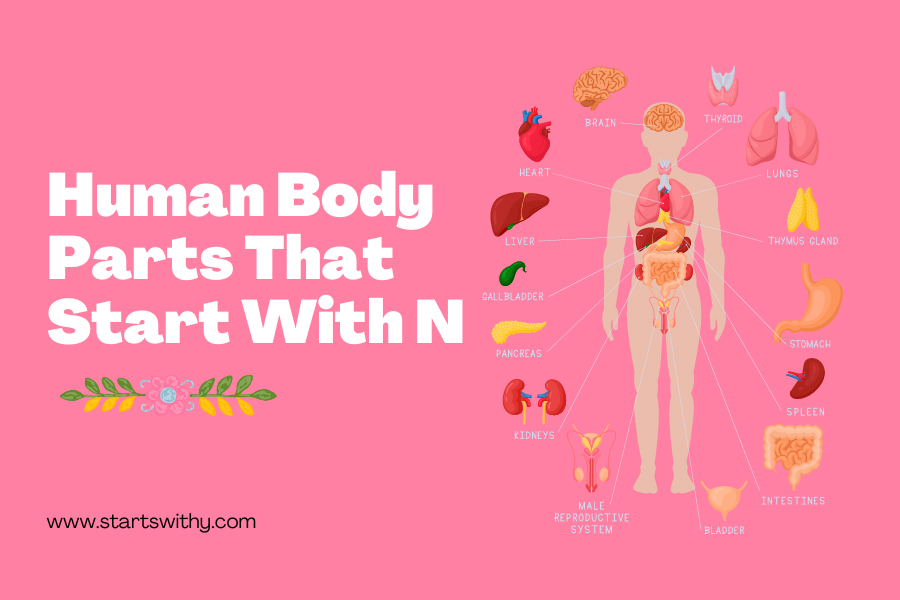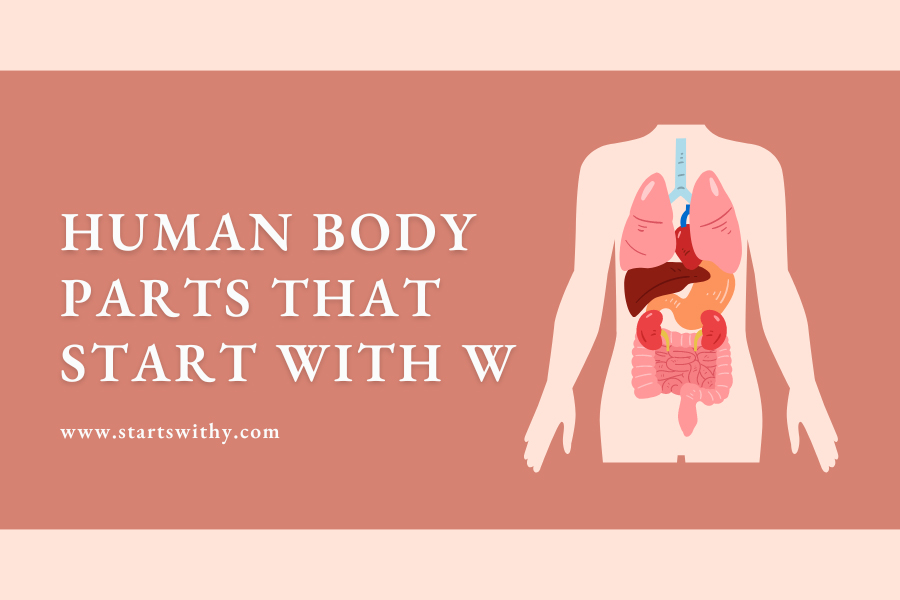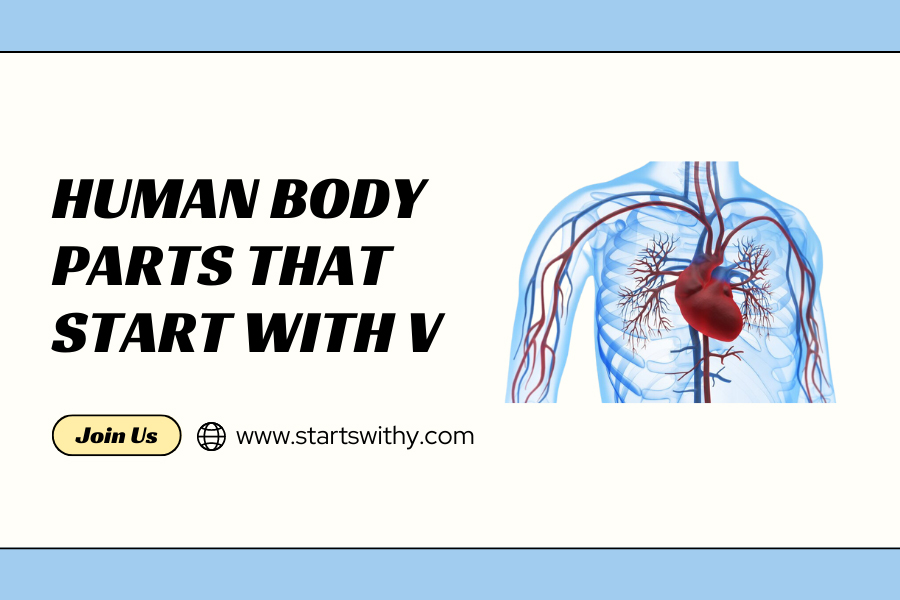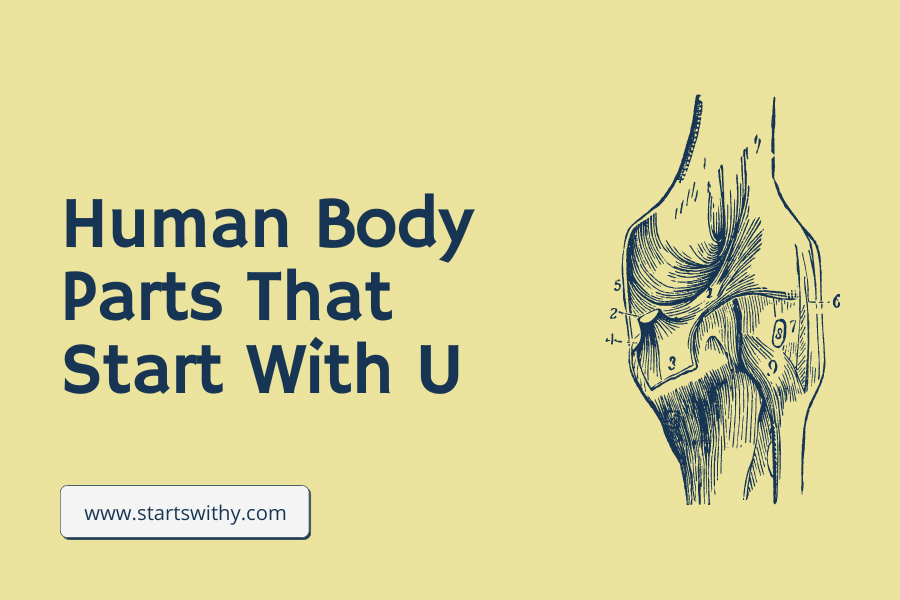The intricacies of the human body are a testament to nature’s architectural prowess. Each part, regardless of its size or visibility, has a role in the grand symphony of life. As we navigate the anatomical landscape alphabetically, it offers a systematic lens through which we can appreciate our physiological complexity.
With the letter ‘N’, we embark on a journey that traverses the exterior and dives deep within, uncovering parts familiar and those seldom acknowledged. From the protective shield of our nails to the intricate neural networks that communicate our every sensation, this article sheds light on the body parts that commence with the letter “N,” emphasizing their structure, function, and significance in the human narrative.
Human Body Parts That Start With The Letter N
The human body, in its intricate design and myriad components, remains one of the most studied and marveled at subjects in science and art alike. Venturing alphabetically, each letter unfurls a host of organs, systems, and structures that piece together the puzzle of our anatomy. As we explore the letter ‘N’, we find a mix of recognizable and lesser-known body parts. In this detailed account, we will delve deep into those body components that begin with the letter “N,” elucidating their form, function, and importance.
1. Nails
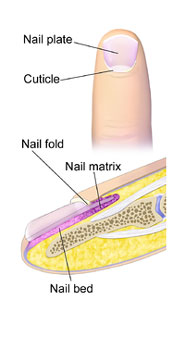
Found at the tips of our fingers and toes, nails are familiar structures that play both protective and aesthetic roles.
- Structure and Location: Nails are composed of keratin, a tough protein. They consist of the nail plate (the visible part), the nail matrix (where new nail cells are produced), the nail bed (under the nail plate), the cuticle (skin at the base of the nail), and the lunula (the crescent-shaped white area).
- Functions: Nails protect the sensitive tips of fingers and toes. They also enhance our tactile sensation and are used for scratching and other minor tasks.
- Clinical Significance: Nail health can be an indicator of overall health. Issues like fungal infections, nail-pitting, or yellowing may signify underlying conditions or nutritional deficiencies.
2. Nares
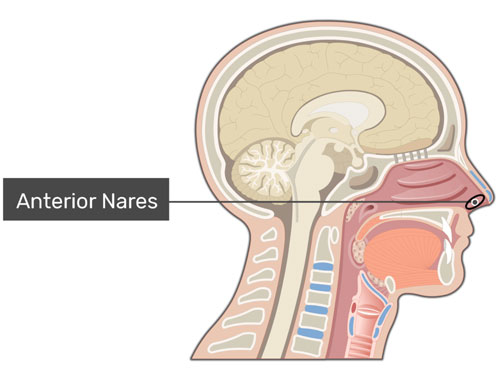
Often referred to as nostrils, nares are the external openings of the nasal cavity.
- Structure and Location: There are two nares, separated by the nasal septum, leading into the nasal cavity.
- Functions: Nares are the primary entry and exit points for air during breathing. They also play a role in filtering, moistening, and warming the air that enters the respiratory system.
- Clinical Significance: Blockage, inflammation, or injury to the nares can affect breathing. Conditions like nasal polyps or deviations of the nasal septum can impact the nares’ function.
3. Neck
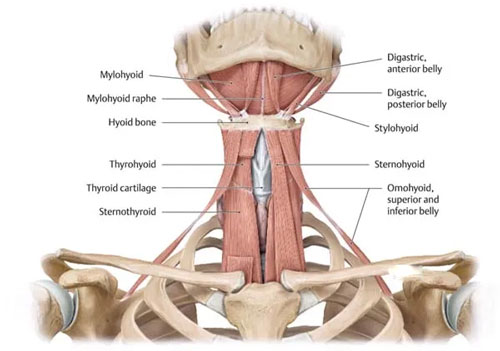
Connecting the head to the rest of the body, the neck is a vital and versatile structure.
- Structure and Location: The neck houses numerous structures, including the cervical spine, trachea, esophagus, blood vessels, muscles, and glands such as the thyroid and parathyroids.
- Functions: The neck supports the head, allows for its movement, facilitates the passage of air and food, and houses crucial blood vessels connecting the brain with the rest of the body.
- Clinical Significance: A variety of medical conditions can impact the neck, from muscular strains and cervical spine disorders to thyroid diseases and lymphadenopathy.
4. Nerves
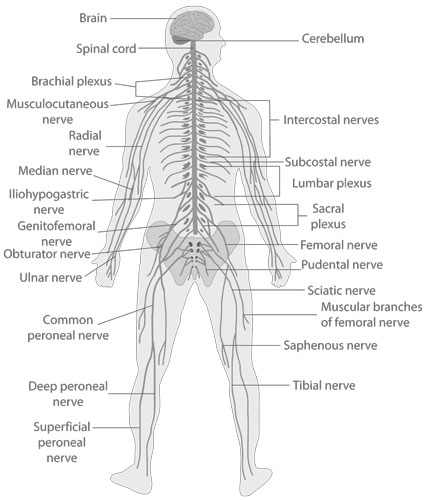
These are the body’s electrical wiring, transmitting signals between the brain, spinal cord, and other body parts.
- Structure and Location: Nerves are found throughout the body. They consist of bundles of axons, protected by a myelin sheath, which facilitates the transmission of electrical impulses.
- Functions: Nerves are essential for sensation, movement, and organ function. They relay messages between the brain and the rest of the body, ensuring seamless coordination.
- Clinical Significance: Nerve damage or neuropathy can result from various conditions, including diabetes, trauma, infections, or exposure to toxins. Symptoms may include pain, numbness, and weakness.
5. Nephrons
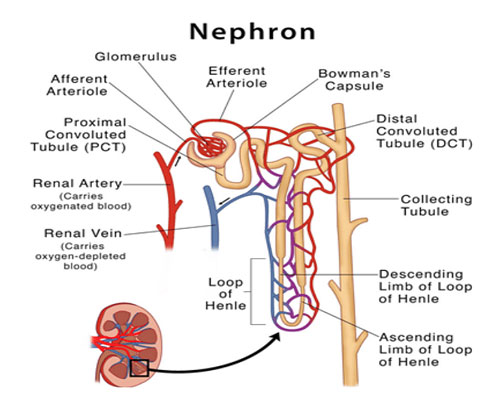
Found in the kidneys, nephrons are the fundamental functional units responsible for filtering the blood.
- Structure and Location: Each kidney contains about a million nephrons, each consisting of a renal corpuscle (glomerulus and Bowman’s capsule) and a renal tubule.
- Functions: Nephrons filter blood, removing waste products and excess substances to form urine. They also play a role in regulating blood pressure, electrolyte balance, and blood volume.
- Clinical Significance: Damage or dysfunction of nephrons can lead to kidney diseases. Conditions like glomerulonephritis or diabetic nephropathy directly impact nephron function.
6. Nipple
Located on the chest, nipples are present in both males and females.
- Structure and Location: Nipples are protruding structures at the center of the areola on the breast.
- Functions: In females, nipples play a role in breastfeeding as milk is secreted through ducts that open at the nipple.
- Clinical Significance: Infections, inflammation, and certain cancers can affect the nipple. Any unusual discharge, inversion, or change in appearance should be medically evaluated.
7. Nose: Your Smelly Superhero
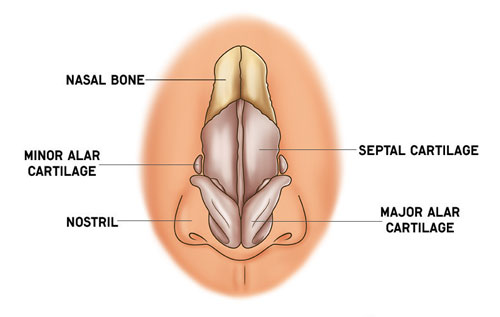
The nose, perched prominently on our faces, is more than just a sniff-and-breathe apparatus. It’s a sensory powerhouse, packed with 40 million olfactory receptors – that’s more than any other mammal! These tiny detectives identify thousands of smells, from the delicate fragrance of a rose to the pungent aroma of stinky gym socks.
But the nose isn’t just about smelling. It also acts as a natural air conditioner, warming and humidifying the incoming air before it reaches your lungs. Plus, tiny hairs inside the nostrils trap dust and debris, keeping your respiratory system clean. And did you know your nose even helps you taste? When you eat, odor molecules travel from your mouth to the back of your nose, adding another layer of flavor to your food.
Fun fact: Your nose is as unique as your fingerprint! No two noses are exactly alike, thanks to the combination of bone, cartilage, and soft tissue that shapes this amazing organ.
8. Neck Veins: Highways of the Head and Neck
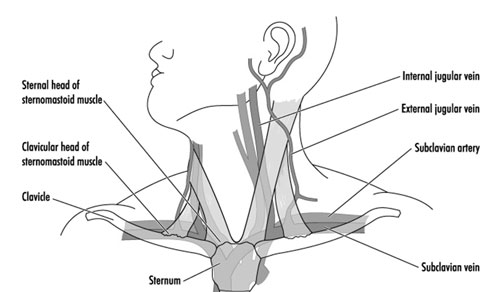
Peek beneath your chin or along the sides of your neck, and you might see some thin blue lines – those are your neck veins! These vital vessels play a crucial role in returning blood from your head and neck back to your heart. Imagine them as tiny highways, constantly shuttling deoxygenated blood back to the central station for a fresh refill.
The two main veins in your neck are the jugular veins. The internal jugular vein, located deeper inside, carries blood from the brain, while the external jugular vein, closer to the surface, drains blood from the face and scalp. These veins can become more visible when you exert yourself, cough, or strain, as the pressure increases within them.
It’s important to note that swollen or tender neck veins can sometimes be a sign of an underlying medical condition. If you notice any concerning changes in your neck vein appearance, consult a doctor to rule out any potential issues.
9. Nasal Bone: The Bridge Builder
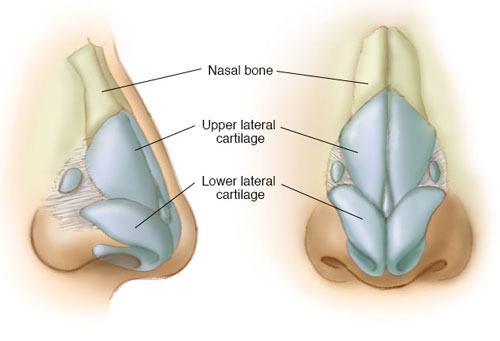
The nasal bone, a small, flat bone located at the bridge of your nose, might seem insignificant. But don’t underestimate its power! This sturdy bone works with other nasal bones and cartilages to form the framework of your nose, providing support and structure. It also protects the delicate structures underneath, like the nasal septum and the blood vessels that supply your nose.
The nasal bone also plays a vital role in shaping your nose’s appearance. Its size and shape contribute to the overall width and projection of your nose. Interestingly, the nasal bone is one of the first bones in the face to complete its development, often around the age of two.
Fun fact: Did you know that the nasal bone is one of the most commonly fractured bones in the face? This is because its location makes it vulnerable to injuries from falls, bumps, or even sports impacts. However, due to its good blood supply, the nasal bone heals relatively quickly in most cases.
These are just a few snippets about the fascinating world of noses, neck veins, and nasal bones. Remember, your body is full of incredible structures, each with a unique story to tell. So, the next time you take a breath, feel the cool air in your nose, or notice the veins pulsing in your neck, take a moment to appreciate the amazing machinery that keeps you going!
10. Nasal Cavity: The Airway Wonderland
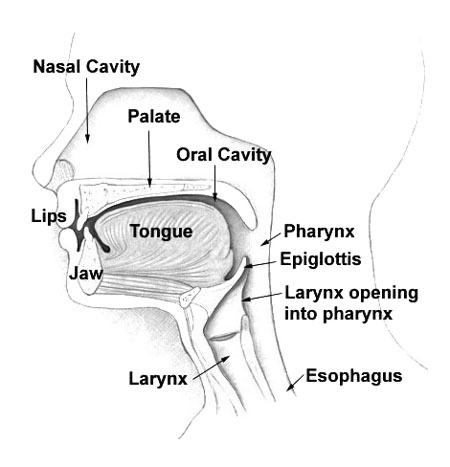
Imagine a tunnel lined with soft, velvety walls, warming and humidifying the air as it rushes through. This, my friends, is the nasal cavity, the passageway for air entering and leaving your body. But it’s much more than just a simple air duct!
- Air Filtration System: Tiny hairs within the cavity trap dust and debris, keeping your lungs clean.
- Heating and Humidifying Unit: The lining of the cavity releases mucus, which warms and moistens the air you breathe, protecting your lungs from dryness and irritation.
- Scent Detective: Millions of olfactory receptors nestled in the upper part of the cavity identify thousands of smells, adding a delicious dimension to your world.
Did you know the nasal cavity is even divided into two chambers by a thin wall called the nasal septum?
11. Nasal Septum: The Divider in Chief
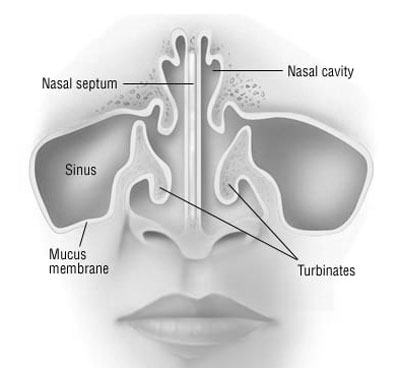
Think of the nasal septum as a wall down the middle of your nose, keeping the left and right chambers separate. It’s made up of both bone and cartilage, providing structural support and ensuring smooth airflow.
- Maintaining Balance: The septum ensures airflow is equal on both sides, preventing one nostril from getting overwhelmed.
- Protecting Delicate Structures: It shields the sensitive parts of the nose, like blood vessels and nerves, from injury.
- Shaping Your Sniffer: The shape and size of the septum contribute to the unique appearance of your nose.
Interestingly, a deviated septum, where the wall is crooked, can affect airflow and lead to breathing difficulties. Thankfully, medical procedures can help correct this imbalance.
12. Neck Muscles: The Movers and Shakers
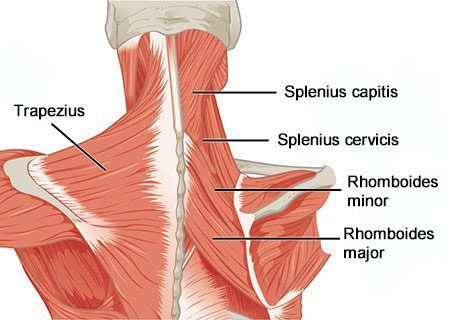
Our necks aren’t just for holding our heads; they’re packed with over 20 muscles that enable us to move, swallow, and even breathe! These amazing muscles work together to perform various functions:
- Head Movement: Muscles like the sternocleidomastoid and scalenes allow you to tilt, turn, and bend your head in all directions.
- Speech and Swallowing: The suprahyoid muscles play a vital role in speech and swallowing by moving the larynx and tongue.
- Breathing Support: Deeper neck muscles, like the diaphragm, assist with breathing by expanding and contracting the chest cavity.
Keeping these neck muscles strong through exercises like head rolls and chin tucks can improve posture, prevent pain, and boost overall well-being.
So, the next time you take a breath, wiggle your nose, or nod your head, remember the incredible workings of the nasal cavity, nasal septum, and neck muscles. These unsung heroes play a crucial role in keeping us healthy and connected to the world around us. Keep exploring, keep learning, and keep appreciating the amazing machinery that makes our bodies tick!
List of Human Body Parts Starting with N
| Nares, Posterior | Nasal Bone | Nasal Cavity |
| Nasal Cavity, Dry Bones | Nasal Septum | Nasal Septum, Dry Bones |
| Nasolacrimal Duct | Neck | Neck Muscles |
| Neck Veins | Nerves | Nerves Of The Upper Extremity |
| Nose | Nipple | Nephrons |
| Nails |
Conclusion
The letter ‘N’ offers a nuanced view of the human body, revealing the diversity of our anatomy. From the hard keratin of our nails to the delicate filtering units of our kidneys, the structures starting with ‘N’ underline the body’s multifaceted design. Recognizing and understanding these parts, from their basic form to their complex functions, amplifies our appreciation for the intricacies of human life and biology.
Human Body Parts That Start With
A | B | C | D | E | F | G | H | I | J | K | L | M | N | O | P | Q | R | S | T | U | V | W
